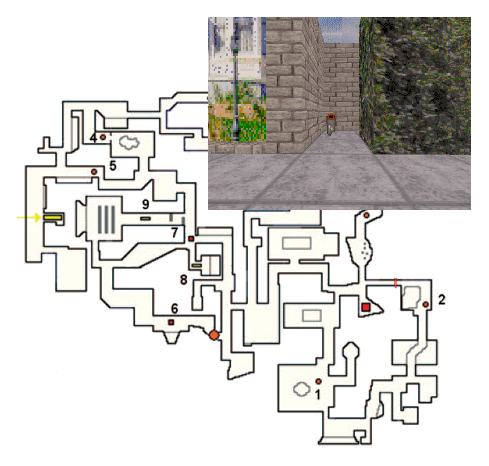Project B5 – Temporal aspects of spatial memory consolidation
The representation of new information in the brain is not static. Over the days and months following acquisition, memories shift from hippocampal to neocortical areas partly related to sleep [1]. Spatial memories are particularly important and well-studied, as the hippocampus contains a representation of allocentric space [2]. Whether spatial memories become less hippocampus dependent with time is an unresolved issue. Additionally it is not clear how spatial representations change when memories progress from episodic to semantic storage. This project will investigate changes in how the human brain represents spatial memories over periods of up to 6 months. We will apply recent advances in computational analysis of EEG and fMRI signals, which use multivariate pattern classification to predict cognitive activity [3], specifically in spatial navigation [4].
Objectives and description of the project
This project will focus on the changes in brain representations at the transition between episodic (“Here, I took a right turn.”) and semantic  spatial memory (“B is south of A.”) We will use mainly 128-channel EEG [SG] and 3T fMRI [SGla] to analyze brain activity during virtual maze navigation (figure 1). Tasks will be performed either in a 3D virtual reality (Bernstein VR Facility), providing an immersive auditory and visual environment, as well as rotational cues for navigation [5], or in a simplified 2D version inside the fMRI scanner. In the theoretical part of the project we will model episodic-to-semantic memory transfer, which we hypothesize consists of translating replaying sequences of activity in the hippocampal formation [6] into the stable states of an attractor-type network in neocortex. Models will be trained with inputs generated by the VR and tested with respect to their capacity to discriminate partially overlapping trajectories both in the sequence and the attractor part. Model variants can be evaluated by comparison with experimental data. The experiments will also allow us to investigate whether spatial memories based on landmarks vs. path integration (distance measures) are translated differently into semantic memory, and to examine the contribution of different sensory modalities to the memory of space. Finally, EEG during sleep will be analyzed for signs of memory trace reactivation such as seen in rats.
spatial memory (“B is south of A.”) We will use mainly 128-channel EEG [SG] and 3T fMRI [SGla] to analyze brain activity during virtual maze navigation (figure 1). Tasks will be performed either in a 3D virtual reality (Bernstein VR Facility), providing an immersive auditory and visual environment, as well as rotational cues for navigation [5], or in a simplified 2D version inside the fMRI scanner. In the theoretical part of the project we will model episodic-to-semantic memory transfer, which we hypothesize consists of translating replaying sequences of activity in the hippocampal formation [6] into the stable states of an attractor-type network in neocortex. Models will be trained with inputs generated by the VR and tested with respect to their capacity to discriminate partially overlapping trajectories both in the sequence and the attractor part. Model variants can be evaluated by comparison with experimental data. The experiments will also allow us to investigate whether spatial memories based on landmarks vs. path integration (distance measures) are translated differently into semantic memory, and to examine the contribution of different sensory modalities to the memory of space. Finally, EEG during sleep will be analyzed for signs of memory trace reactivation such as seen in rats.
[1]: Gais et al. PNAS 2007. [2]: Burgess et al. Neuron 2002. [3]: Mitchell et al. Science 2008. [4]: Hassabis et al. Curr Biol 2009. [5]: Glasauer et al. J Neurophysiol 2007. [6]: Leibold et al. Cereb Cort 2008.

